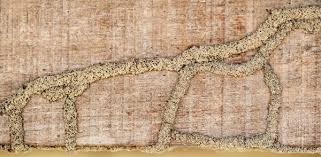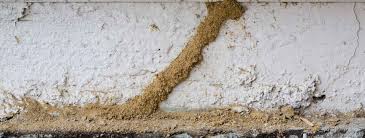What are the Types of Termites?
While there are many species of termites around the world, they typically fall into one of three types: drywood, dampwood, and subterranean termites.
All About Drywood Termites
Unlike other termites, drywood termites do not need contact with soil and only infest dry wood. Since they do not require moisture from the ground, they prefer to nest in dryer wood above the ground, such as roof materials, wooden wall supports, or dead wood around a home. When they infest a home, they likely entered through exposed wood or infested wood that was brought indoors. One reliable way to differentiate them from other types is the fact that drywood swarmers shed their wings after swarming.
Habits of Dampwood Termites
Learn the different types of termites from Heron Home & Outdoor in Orlando, Apopka, Leesburg, Oviedo, Kissimmee and Central FL areasTrue to their name, dampwood termites are attracted to wood that has a high moisture content. They are much larger than other termites and are known to infest stumps, fallen logs, tree branches, and other damp wood sources that are often in decay. When they infest a home, they most likely entered into the building where the wood is touching the soil or where a leaky pipe has created moisture. Dampwood termites cover up their entry holes with their fecal matter rather than building mud tubes as other termites do.

Signs of Termite Activity
Evidence of Termites
Termites can often live on your property or inside your home for an extended period of time before being detected. Whether it’s drywood termites, which burrow deep within wooden structures, or subterranean termites, which are primarily found underground, these discreet intruders can be tough to discover before significant damage has already been done. To help keep damage to a minimum, it’s crucial to catch the warning signs as soon as possible.
Keep an eye out for the following signs of termite activity:
- Discolored or drooping drywall
- Peeling paint that resembles water damage
- Wood that sounds hollow when tapped
- Small, pinpoint holes in drywall
- Buckling wooden or laminate floor boards
- Tiles loosening from the added moisture termites can introduce to your floor
- Excessively squeaky floorboards
- Crumbling, damaged wood
- Stuck windows or doors
- Maze-like patterns in furniture, floor boards or walls
- Mounds of drywood termite pellets, often resembling small piles of salt or pepper
- Piles of wings left behind after swarms, often resembling fish scales
- Mud tubes climbing the foundation of your home
- Flying termite swarms anywhere on your property

Do Termites Bite?
Can Termites Harm Humans?
While termite colonies include a highly evolved soldier caste, these soldier insects are equipped to combat invading insects, such as ants and members of rival termite colonies. Termite populations also cause severe harm to homes, but are not known to bite humans.
Solider termites have the ability to bite humans, but would only do so if handled. Essentially, termites definitely bite wood and do attack other insects, but they do not bite people.
Although homeowners experiencing an infestation should not be concerned about receiving bites from termites, professional extermination methods should be sought and implemented to protect the structure of your home. Signs of termite infestation depend on the type of termite but can include termite droppings, damaged wood, sagging floors or ceilings, mud tunnels located near the foundation or winged swarmers.

How Bad Are Termite Bites?
In the event that you have been bitten by a termite, you will notice a tiny red dot which is its point of contact with your body.
Being bitten by a termite isn’t much different than being bitten by a mosquito. If you feel anything at all after being bitten, you will not suffer any health problems as a result.
Irritation in the area should subside within a few days, but you do not risk infection or disease because of the bite. If you’ve been bitten by a soldier termite, you may experience the burning of the insect’s mandible which is what they use to break down the cellulose.
Difference Between Flying Ants and Termites
Here are some ways do identify the differences:
- While both species have four wings, termite wings are uniform in size. Winged ants have noticeably larger wings in the front than the pair in the back.
- Termites antennae are almost straight where the ant’s antennae is elbowed.
- Termite wings are twice as long as their body. Ant wings are shorter and more proportionate to their bodies.
- Ants appear distinctly segmented, because of their thin waist. Termites have a broad waist and are mostly a uniform width along their entire body.